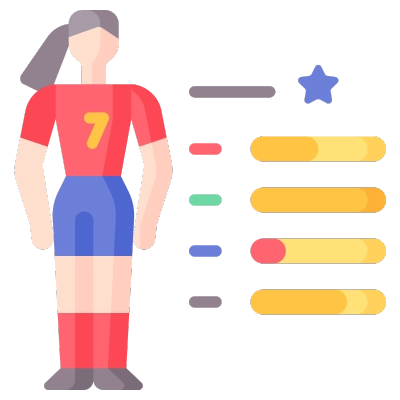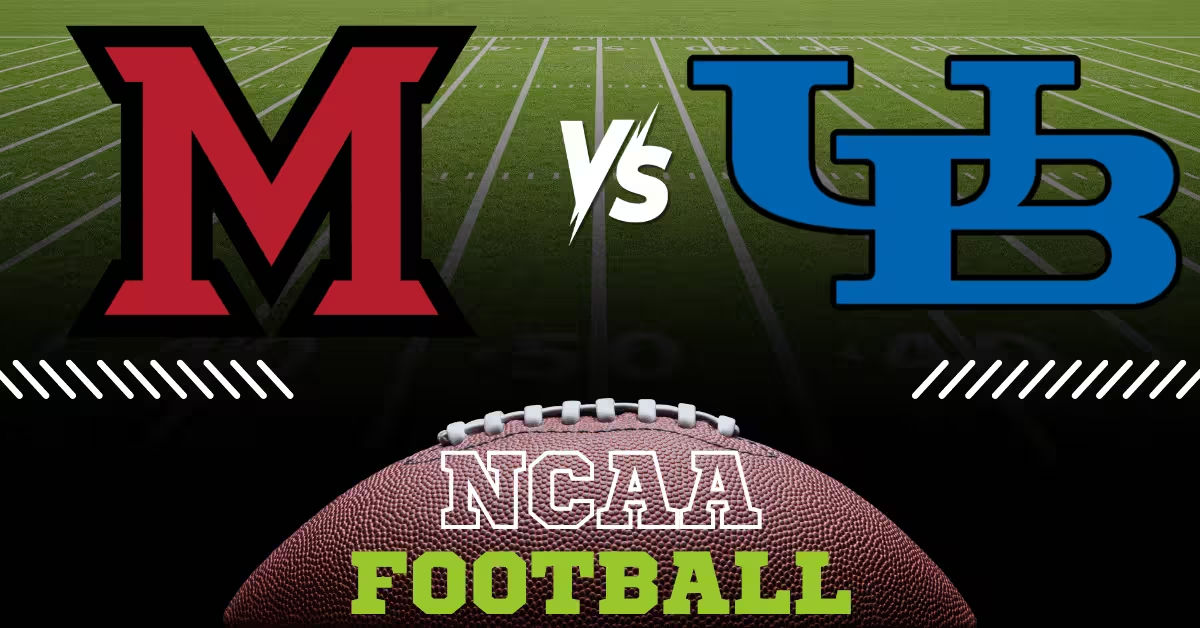The Science Behind Over/Under for Individual Player Stats
Over/under betting on individual player stats is one of the most fun and exciting ways to engage with sports, if you ask us. Instead of just focusing on the team outcomes, you’re zeroing in on the performance of one single athlete. Will an NBA hotshot hit 30 points in tonight’s game? Can a star quarterback throw for more than 250 yards? These are the kind of bets that bring more of a personal touch to sports betting—and it makes watching even more thrilling.
The real beauty of over/under betting? It lies in its elegant simplicity! All you’re doing is deciding if a player will go above or below a set line. But hold up: don’t just pick out a player based on a gut feeling, no, no, no. In order to make smart picks, you need to do some homework by looking at data, understanding trends, and factoring in the main variables at stake. Only then can bettors make the most informed decisions that will up their odds of winning!
Need some help? That’s why we’re here! We’ll go over everything you need to know and tell you how to analyze over/under lines with a scientific flair. From the basics of the betting style to the best strategies, tools, and common mistakes, you’ll be schooled at making the smartest plays!
Understanding Over/Under Betting
Over/under betting has become a fav for sports fans who actually enjoy analyzing individual performances. Instead of rooting for a team as a whole, you’re betting on how a single player will perform during a game. It’s simple and fun and switches up the focus to individual achievements on the playing fields.
What Is Over/Under Betting?
In over/under betting, oddsmakers will set a line for a player’s statistical performance—like total points scored, rushing yards, or goals. Your only task? To predict whether the player will exceed (go over) or fall short of (go under) that number!
Below are a few examples of over/under bets:
– NBA: Will a player score more or fewer than 20 points in a game?
– NFL: Will a running back rush for more or fewer than 75.5 yards?
– MLB: Will a batter hit more or less than 1.5 home runs in a series?The “.5” in these lines guarantees that there’s no tie or “push.” A result either goes over or under, and that makes all outcomes clear.
Why It’s Popular
Why do people love the individual over/under category? For a lot of reasons! Maybe you only follow a team because you love the quarterback. For whatever reason, the following reasons are why it’s so popular:
- Personal Connection: Fans usually have their fav players, and betting on them amplifies the excitement of watching them perform.
- Simple Predictions: It’s so much easier to analyze a single player’s stats than an entire team’s performance, which makes it easier for everyone—especially beginners.
- Diverse Options: Over/under betting spans across tons of sports and stats, from soccer goals to baseball strikeouts, which means it’s always fresh and versatile.
Over/under bets are also super fun during the more high-stakes games because that’s where individual performances usually are the deciding factor. The wagers mean that every play matters, whether you’re betting on a basketball star to break their scoring average or a pitcher to throw a no-hitter.
The Role of Data in Over/Under Betting
If you’ve ever mused over how exactly the over/under lines are set for player stats, the answer is easy: data. And tons of it. From averages and trends to advanced analytics, data is the backbone of over/under betting, and the bettors who know how to use it to their advantage have a much better shot at making the smartest picks!
We are going to unpack it in two parts: player performance metrics and historical trends.
Player Performance Metrics
Over/under lines revolve around the main stats that show how a player has been performing. This is where the oddsmakers start, and it’s where bettors should pay attention, too.

- The Basics: Numbers like average points per game, rushing yards, or goals are often used as benchmarks for setting lines. Recent performance plays a big role here, too. Did the player exceed their average in the last few games? Are they trending upward or struggling?
- Matchup History: Past performance against specific opponents is huge. If a wide receiver consistently racks up big yards against a certain defense, that trend will probably influence the line.
- Advanced Metrics: For more detail, you can look into stats like PER (Player Efficiency Rating) in basketball, WAR (Wins Above Replacement) in baseball, or usage rates, which measure how involved a player is in their team’s offense. These go beyond the basics and offer insights that casual bettors might overlook.
Historical Trends
Data isn’t only for the present—there are important patterns that show up over time. Historical trends provide a lot of context, and that helps you understand what’s typical for a player and what could be an outlier.

- How Bookmakers Use Trends: Oddsmakers rely really heavily on historical data when they are setting lines. If a quarterback averages 250 passing yards per game over two seasons, that number becomes the basis for their over/under line.
- Recognizing Anomalies: As a bettor, spotting the unusual is super important. If a player’s recent numbers don’t match up with their long-term performance, it’s worth asking why. Did they face tougher opponents? Are they adjusting to a new role on a team?
Data doesn’t guarantee success—nothing does—but it’s undoubtedly the most reliable tool for making the most informed bets. The more you understand about the numbers behind a player’s hot streak or advanced stats, the better your chances become of making solid predictions.
Factors Influencing Over/Under Outcomes
Over/under outcomes have always been influenced by way more than a player’s skill level or a recent performance. Variables like matchups, coaching strategies, and the weather all play an important part in how a player will perform. Next up, we’ll break it down into external factors, internal factors, and environmental conditions to see how each one can affect the numbers!
Who a player is up against usually has the biggest impact on their performance, like the following aspects:
– Opponent Strength: Facing a top-ranked defense is a completely different challenge than playing against a struggling team. Defensive matchups can limit a player’s usual output or, in some cases, give them room to level up.
– Team Tactics: Some opponents adjust their strategy to shut down a star player, which forces their teammates to step up instead. This is super common in basketball and football.
What’s happening with the player themselves can also influence whether they go over or under their line!
– Health and Fatigue: Is the player fully recovered from a recent injury? Are they playing their third game in five nights? Physical condition always plays a huge part in an athlete’s performance.
– Coaching Strategies: A player’s role in their team’s game plan can change—it all depends on the matchup. For example, a wide receiver might see fewer targets in a game where the team is planning to concentrate on the run.
As for outdoor sports, the playing environment can (and does) have a major impact on performance.
– Weather: Rain, snow, or high winds can limit performance, especially in sports like football or soccer. A quarterback’s passing yards may drop in bad weather, while a baseball hitter might struggle in colder conditions.
– Venue-Specific Factors: Some stadiums have their own characteristics that can affect gameplay. For example, altitude in Denver’s stadium gives an edge to baseball hitters but can take the wind out of visiting football teams much faster!
The Science of Setting the Line
Over/under lines for player stats are the result of detailed analysis, not just random guesses. Sportsbooks rely on algorithms, historical data, and market behavior to craft numbers that are both accurate and engaging for bettors. Below, we get into how the lines are created and influenced.
Bookmakers’ Approach
Oddsmakers always analyze a ton of info in order to set over/under lines that show both a player’s abilities and the game’s context, like the following:
- Data-Driven Calculations: Sophisticated models evaluate factors like recent performance, matchup history, and playing conditions. For example, if a quarterback consistently performs well against a specific defense, the line will account for that trend.
- Public Perception: Sportsbooks also are anticipating how bettors will react. Lines are made to balance betting on both sides, which makes sure that the sportsbook is minimizing its risk but still keeping the market engaged.

The Impact of Public Betting Trends
Once a line is set, public betting activity can cause it to shift. This happens when one side of the bet receives way more attention than the other.
- Market Movement: If most bets favor the “over” on a player’s scoring line, sportsbooks may adjust the number upward to encourage more “under” bets.
- Sharp vs. Recreational Bettors: Sharp bettors (professionals) can also greatly influence lines. If sharp money heavily backs one side early, sportsbooks will usually adjust the line to reflect their expertise.
Understanding how sportsbooks create and adjust over/under lines gives bettors an advantage. When you combine this knowledge with personal analysis, you’ll be able to spot opportunities that others might miss!
Strategies for Bettors
Over/under betting on player stats seems like a lot, right? It kinda is complex at first, but a structured approach makes it so much easier to handle. A combo of solid research with practical strategies helps you make confident, informed decisions. Want to know how you can improve your bets with data, value spotting, and risk management? Keep reading to see how you can!
Data-Driven Betting
Using reliable data is a must for making the smartest over/under predictions. It’s not only about the numbers that you see the most; understanding the data insights can give you an added edge.
- Start with Publicly Available Stats: Look at player averages, performance over the last few games, and how they typically match up against their current opponent. Sites like ESPN, Pro Football Focus, and Basketball Reference all have excellent resources.
- Advanced Metrics: Stats like player usage rate (basketball), Expected Goals (soccer), or Wins Above Replacement (baseball) can help you see patterns that basic stats might miss. These are the tools that let you see the story that’s behind the numbers.
- Evaluate Sample Size: When analyzing a player’s recent performances, keep in mind how much data you’re working with. A few good or bad games might skew your perspective if you’re not looking at the forest through the trees.
Spotting Value
The real skill in regards to over/under betting lies in identifying opportunities where the sportsbook’s line doesn’t match up with your analysis.
- Look for Mismatches: Lines can sometimes be off, especially if sportsbooks haven’t adjusted for any new variables like injuries or role changes. For example, a player stepping into a starting position will probably perform above their usual numbers.
- Focus on Matchups: Certain defensive setups or strategies can drastically impact a player’s stats. A quarterback going up against a strong pass rush might struggle to hit their yardage line, while a basketball player facing a weak defense might exceed their scoring average.
- Be Patient: Value usually comes closer to game time when more info becomes available. Don’t rush into bets—wait until you have all of the relevant details.
Risk Management
Even with the most solid plan, betting carries a risk—it always does, and it always will. But managing that risk is what separates the casual players from the most successful bettors.
- Set Limits: Decide on a budget and don’t stray from it. Whether you’re betting daily or weekly, knowing your financial boundaries means that the experience will be what it is meant to be—fun.
- Spread Your Bets: Instead of focusing all of your money on one player or game, spread your bets out across multiple players or sports. This decreases the fallout of one unexpected result.
- Know When to Pass: Sometimes, the best bet is no bet at all. If the numbers feel vague or the variables too unpredictable, it’s okay to hold off and wait for a better opportunity.
By applying these strategies, you’ll approach over/under betting with a more thoughtful and calculated mindset. While luck will always play a role, preparation, and discipline increase your chances of long-term success.
Common Pitfalls to Avoid
Even bettors with plenty of experience under their wagering belts can stumble when placing over/under bets. The wagers take more than just a once-over of the stats—they demand a thoughtful approach that considers both the numbers and the context. Let’s take a look at some of the most common errors and how you can handle them better!
A streak of high-scoring games or strong outings might grab your attention, but these short-term bursts don’t always reflect a player’s typical output. Overemphasizing this kind of data can lead to unrealistic expectations.
– How to Handle It: Look at both recent trends and long-term averages to find a balance. Use a player’s matchup history and overall consistency to determine whether their current form aligns with their usual performance.
Numbers tell one part of the story, but they don’t explain everything. Factors like injuries, team dynamics, and game-day conditions can heavily influence a player’s performance. Betting solely based on stats while overlooking these variables leaves gaps in your analysis.
– How to Handle It: Always review outside factors that might affect performance. If a quarterback is facing a strong pass rush or a basketball star is playing on back-to-back nights, their output could differ from the expected range.
Even with a detailed breakdown of stats and trends, sports remain unpredictable. Players can have an off night, or unexpected circumstances may change the flow of the game. Placing overly confident bets is always an unnecessary risk.
– How to Handle It: Stick to consistent betting amounts, regardless of how certain you feel about an outcome. No analysis will ever be flawless, so look at every wager as part of a larger strategy and not as a guaranteed win.
Over/under lines usually move as betting activity increases, and the adjustments reflect new information, like player injuries or public betting patterns, and they can dramatically alter the potential value of a bet.
– How to Handle It: Pay attention to how lines evolve in the lead-up to the game. If a line changes and no longer fits your analysis, consider reevaluating whether it’s worth pursuing. Timing matters—sometimes waiting gives you a clearer picture.
One of the easiest ways to completely derail your betting strategy is to go in without boundaries. Whether that’s chasing losses or increasing stakes after a win, playing without a plan can quickly mean you lose control of your bankroll.
– How to Handle It: Set clear limits on how much you’re willing to bet and how often. Divide your bankroll into smaller portions for individual bets, and never let emotions influence how much you wager.
By addressing these common mistakes, you’ll bring more structure and discipline to your betting approach. Over/under wagering isn’t just about picking a side—it’s about understanding the full context, managing risk, and staying focused on long-term success.
Over, Under, and On Point: Betting Like a Pro
Betting on over/under lines for player stats definitely adds a different perspective to sports wagering, but it’s one we love! When you are focusing on individual performances, you can make calculated decisions that are all backed up with data, trends, and context.
Keep scrolling for a quick recap of all things over-under for individual player stats:
- Understand the fundamentals: Over/under bets all involve predicting whether a player’s performance will exceed or fall short of a set line.
- Use data effectively: Use a combo of recent form, historical patterns, and advanced metrics so that you have a well-rounded analysis.
- Factor in context: Opponent strength, player health, and game conditions all play a deciding role in determining any outcomes.
- Practice discipline: Keep your bets consistent, track your results, and don’t overextend your bankroll.
When you take a structured and analytical approach, you’ll be able to improve your over/under betting strategy and have so much fun during the process of refining your skills.
Do you have an outstanding over/under individual player bet that panned out? We’d love to hear how it went down, so tell us your most memorable bets and how you made your decisions in the comments!

Alyssa contributes sportsbook/online casino reviews, but she also stays on top of any industry news, precisely that of the sports betting market. She’s been an avid sports bettor for many years and has experienced success in growing her bankroll by striking when the iron was hot. In particular, she loves betting on football and basketball at the professional and college levels.








